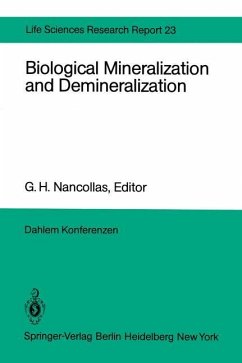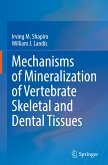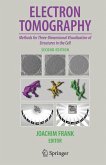normal and pathological mineralization in vertebrates but also with the interesting problems involved in the formation of in tracellular deposits of calcium oxalate in plants. Here cal cium carbonate and silica may also be involved in the mineral ization processes. Calcium carbonate is an important component in the formation of mollusc and avian shells. The observation that both calcite and aragonite may be formed in biogenic cal cium carbonate raises important questions as to what factors control the formation of the final mineral phase. There is little doubt that thermodynamically less stable phases may be kinetically stabilized for long periods of time by other mole cules present in vivo. In normal mineralization, calcium salts may initially be deposited both within the cells and extracel lularly. In the latter case, the role of matrix vesicles and the ways in which the matrix components might control mineral ization were especially emphasized. There is clearly a need for morestructural and functional information involving cells, matrix components, and their associated crystals. The develop ment of further techniques involving mutants, chromofluors, and fixatives for preservation of tissue and the ions present in vivo was recommended. In dealing with abnormal and pathological mineralization, the Workshop concentrated on urolithiasis, gout and pseudo-gout, and the formation of dental caries. Discussions based on the influence of media of low pH on mineral surfaces highlighted some of the factors of importance in controlling crystal dis solution.
Hinweis: Dieser Artikel kann nur an eine deutsche Lieferadresse ausgeliefert werden.
Hinweis: Dieser Artikel kann nur an eine deutsche Lieferadresse ausgeliefert werden.








